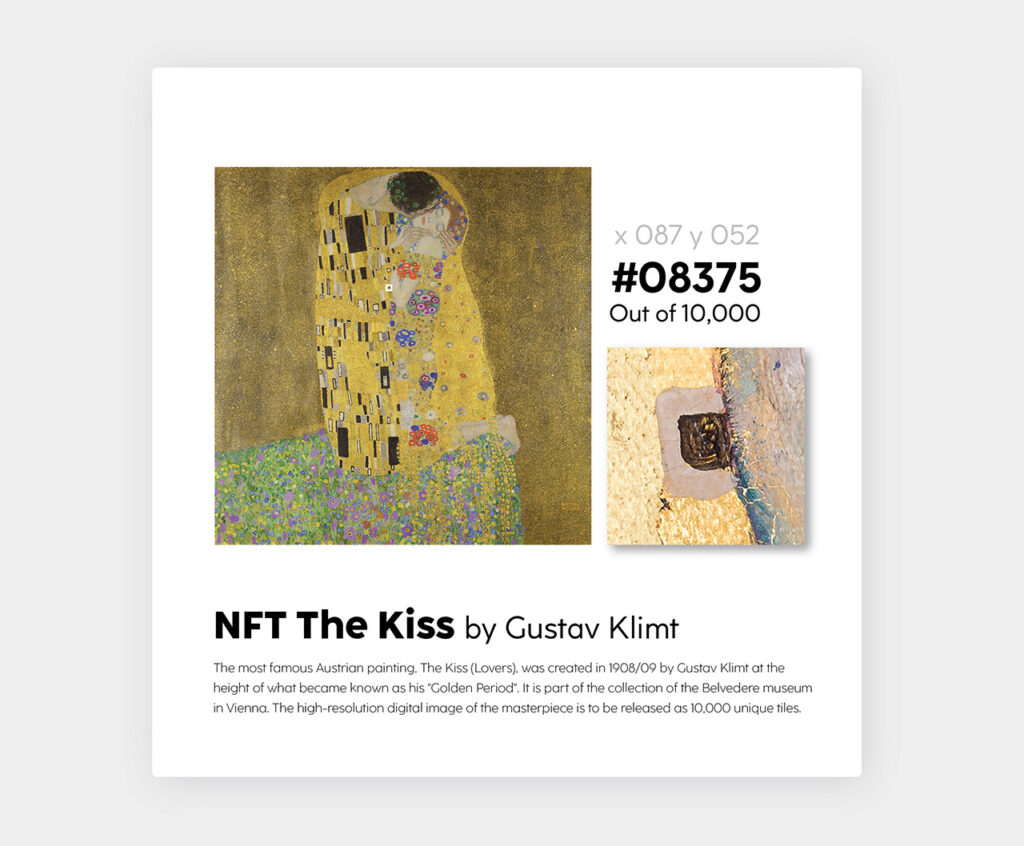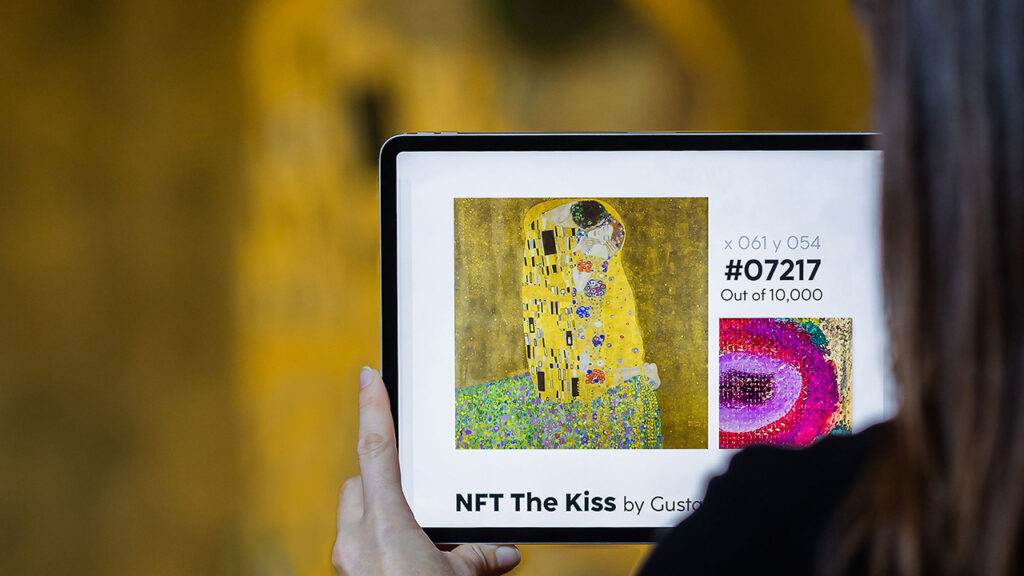The Belvedere Museum is not done reimagining Gustav Klimt’s works for the 21st century. After giving the painter’s infamous Faculty paintings an AI-powered boost for a Google Arts & Culture project last October, the Viennese institution is now turning a contemporary eye onto one of Klimt’s most beloved (and loved-up) creations.
“The Kiss,” completed in 1907-1908, represents the final painting Klimt completed during his so-called Gold Period, marked by his use of gold leaf in his oils, and bathes his signature eroticism in a romantic, almost tender, glow. For more than a century, it’s been a centerpiece in the Belvedere’s permanent collection, and from February 14, it’ll also have a place on the blockchain.
What happened

In the Belvedere’s first NFT sale, a digital edition of Klimt’s “The Kiss” will be fractionalized in 10,000 unique digital tokens, each priced at around €1,850. Image: artèQ
For its first NFT sale, the Belvedere Museum has teamed up with NFT investment fund artèQ to fractionalize a high-resolution digital edition of “The Kiss” into 10,000 unique NFTs, with each 100 x 100 grid priced at around €1,850. The official drop has been timed for Valentine’s Day, after which holders of the Klimt fractions can register as owners of their pieces or append a dedication of love to their segments on thekiss.art, where the digital painting can be viewed in its entirety.
Why it matters

With “The Kiss” NFTs, Katharina Steinbrecher, the Belvedere Museum’s Director of Communications & Marketing, says, “We aim to reach NFT collectors, art lovers and digital romantics worldwide.” Image: Ouriel Morgensztern / Belvedere, Vienna
The Belvedere is not the first and won’t be the last museum to mint NFTs of works in its collections. However, the choice to fractionalize Klimt’s painting might offer a draw for buyers looking to make their first investment in a unique NFT, as “each section becomes a new image,” Katharina Steinbrecher, the museum’s Director of Communications & Marketing, tells Jing Culture & Commerce, “which makes each part a particularly valuable object.”
Further, fractionalized NFTs (or F-NFTs) best capture the blockchain ethos of democratizing ownership, allowing smaller or first-time collectors to invest in a single and often highly priced asset at a lower cost. It’s an approach undertaken by companies like Rally and Particle, which recently fractionalized Banksy’s “Love Is In The Air.”
For creators, F-NFTs also facilitate monetization — a fact that’s friendly to the Belvedere’s purposes here. Besides engaging the crypto art community, the Klimt drop further serves as a source of revenue for the museum. According to Steinbrecher, “The proceeds help us to fulfill our mission: collecting, researching, preserving, and communicating the treasures of the Belvedere.”
More so, for a historic museum founded on modernity, the Belvedere’s NFT debut demonstrates a readiness to evolve its collection — and the idea of collecting — for the digital realm. “The rise of NFTs has given fresh impetus to the intriguing question: What does it mean to own a work of art in the digital age?” says Steinbrecher. “It is an interesting new technology that, in financial terms, should be taken seriously, yet can also be viewed playfully.”



